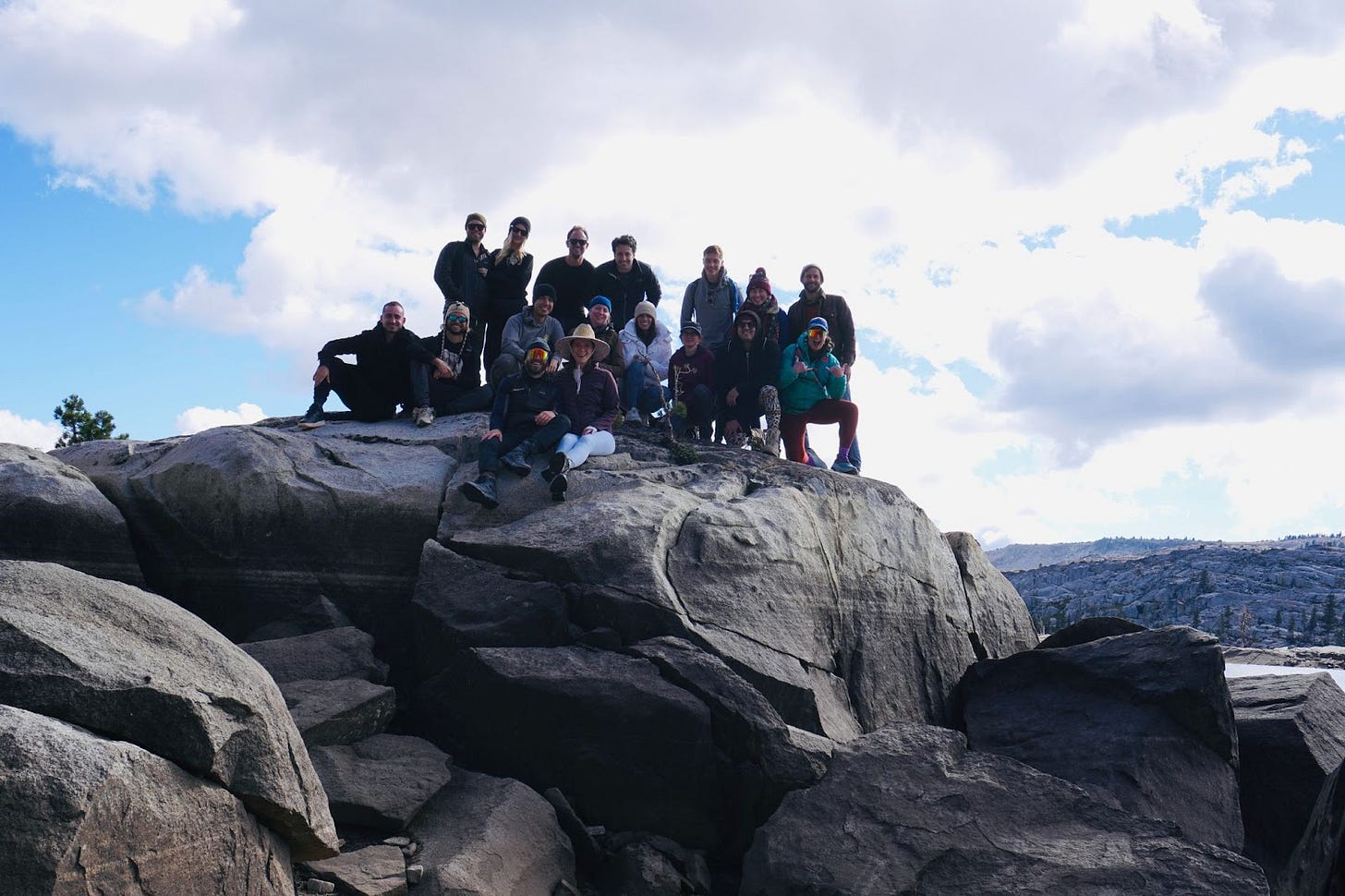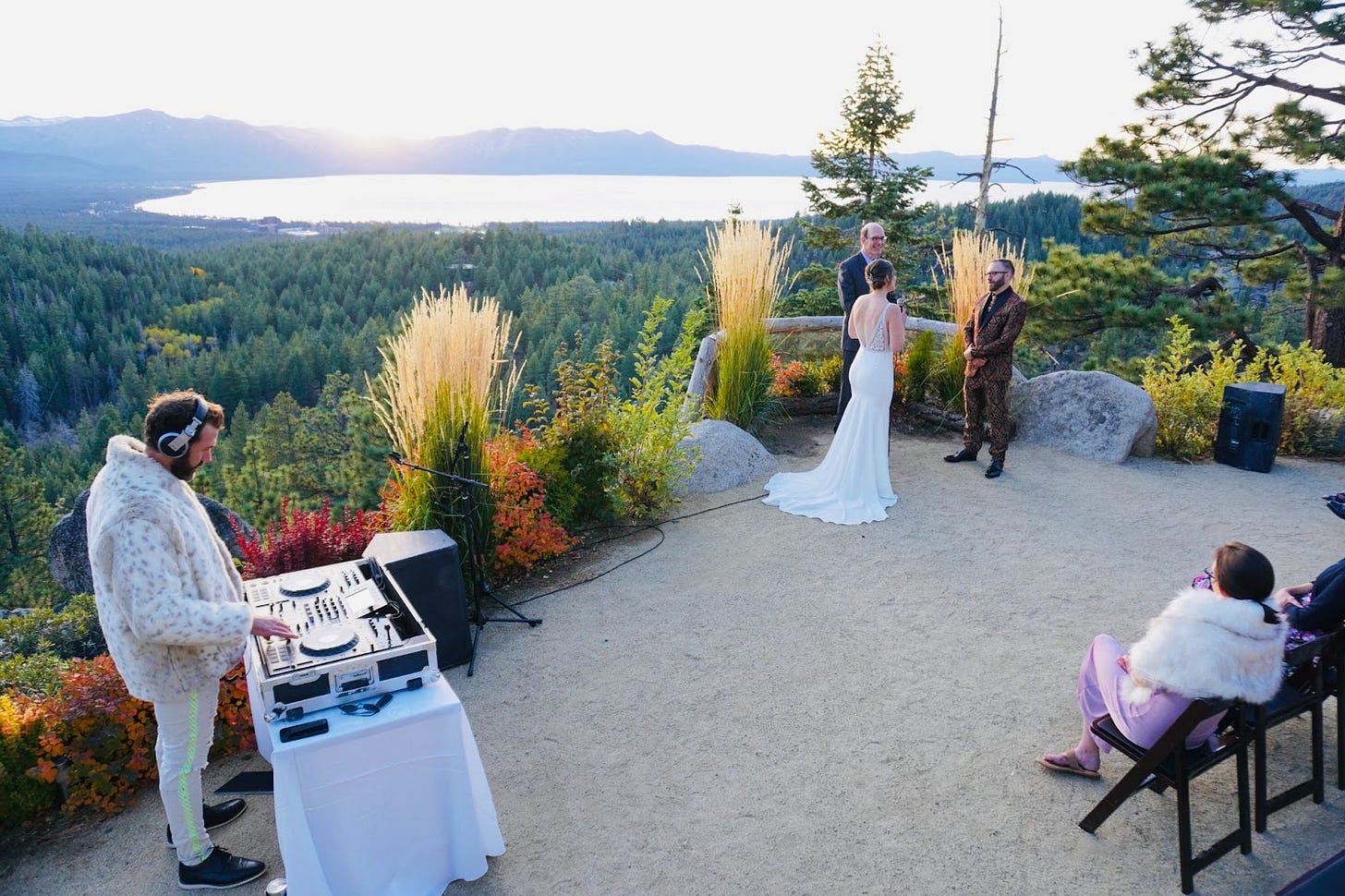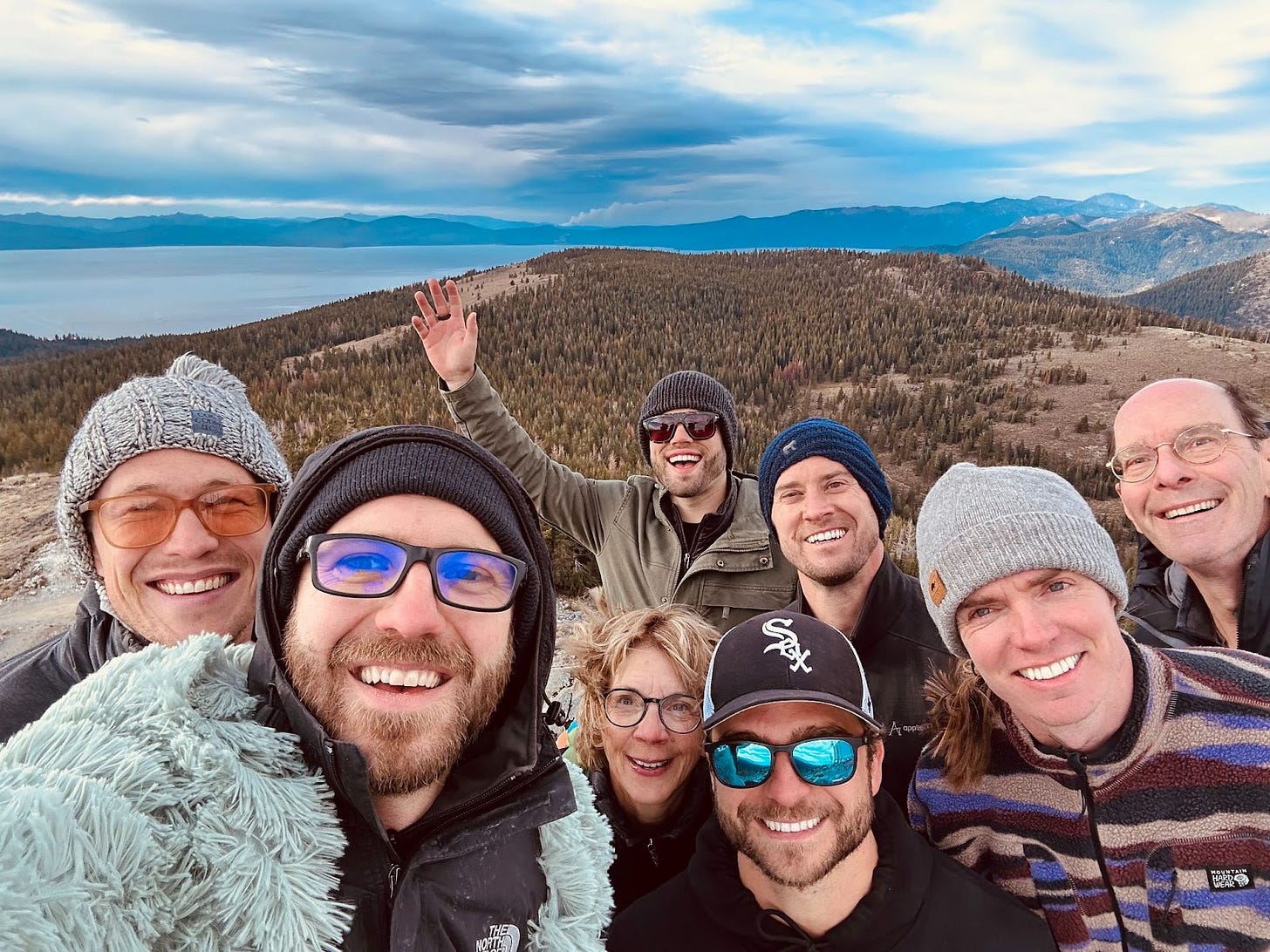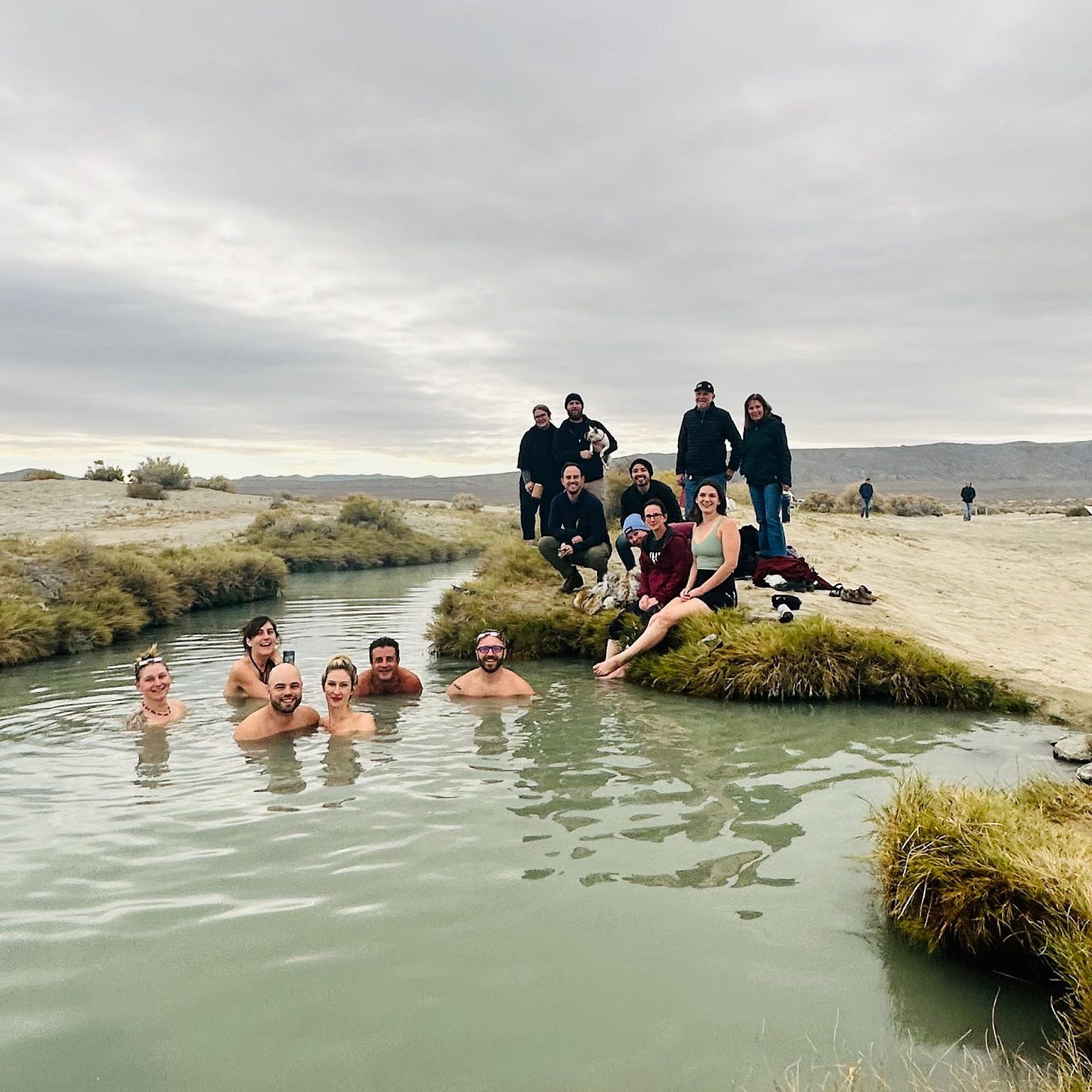Open-Sourcing Relationships and Weddings
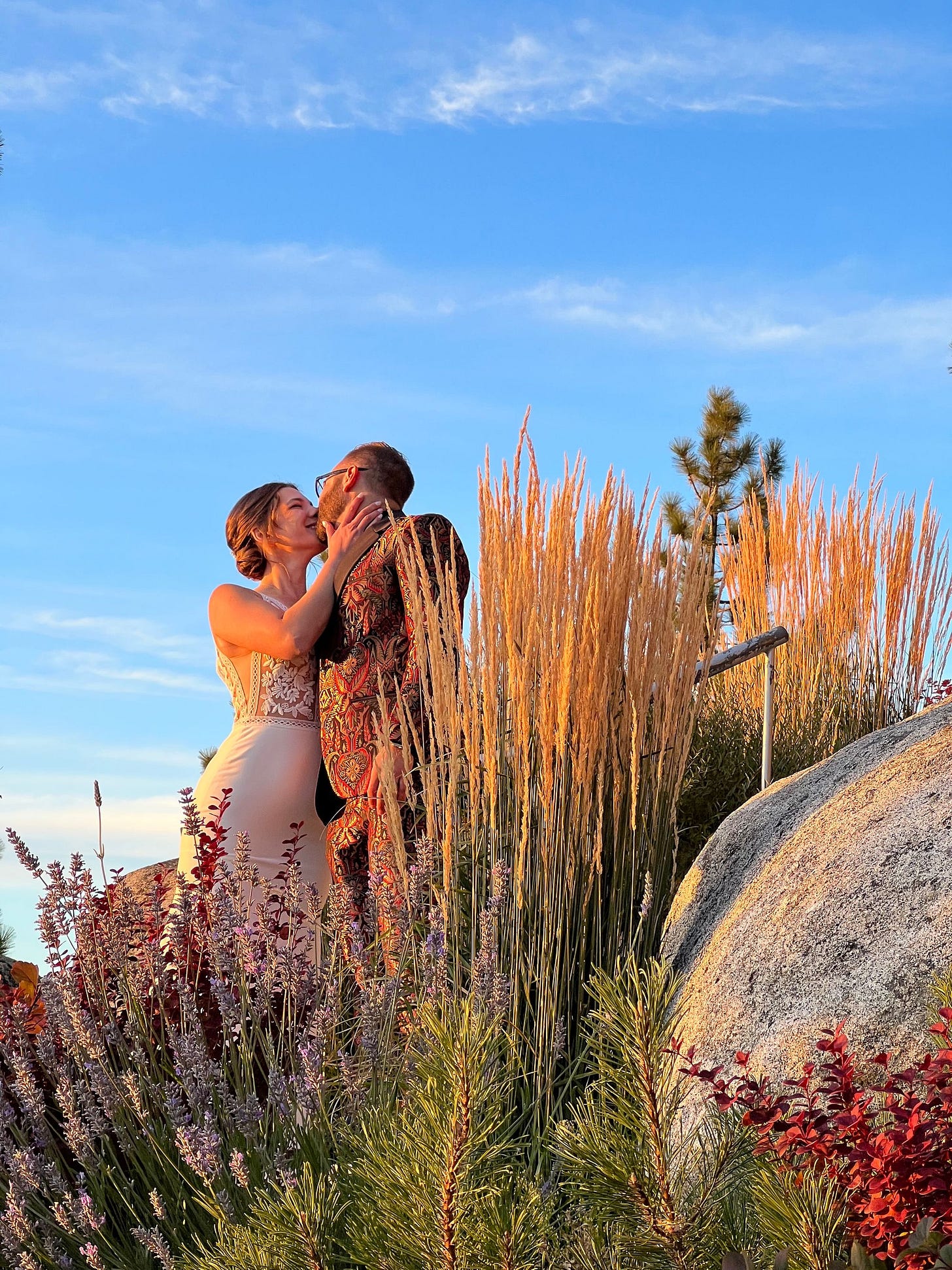
I got married. Obviously this was the best wedding I’ve ever been to, and likely the best experience of my life. Speaking with others, they reflected similar sentiments with comments like “the best wedding,” “my heart feels so full,” and “restored my faith in humanity.” So what makes a wedding and a relationship so good? And how can we disseminate these ideas so that they become more commonplace?
A Relationship Agreement
When my now wife and I started dating, we enacted periodic check-ins. The core idea was that for a relationship to be healthy, both parties individually and the shared dynamic need to be healthy. We called this the “three beings” as a way of assessing the health of me, her, and the relationship. The goal of this was differentiation and integration: to ensure that each person remains sufficiently independent and connected. Too independent and you’re just roommates. Too connected and you’re codependent.
The relationship agreement also came from a pretty epic one-liner from my best man (paraphrasing slightly): “the probability of you writing a contract and it being identical with the state’s marriage license is exactly zero.” So I believe that the optimal route is to differentiate the legal marriage from a non-binding relationship agreement stipulating what the relationship means to you. And no, we’re not getting legally married at this time though that will likely change in the future.
This is what we came up with. Some of these points generalize well and others don’t. But it provides a foundation for what the relationship is, answering basic questions like what we want, how we like to be interacted with, and what changes can cause an existential threat to what we signed up for (changing an opinion about having kids, for instance). One friend cried while reading it saying this should be open sourced. Hence, this blog post.
A point that we didn’t include but we might add in the next iteration is a “default dead” clause. This would say that the relationship agreement is terminated after 12 months if it’s not renewed to encourage periodic reflection on whether this is truly the best thing for everybody.
Wedding Principles
Sometimes it’s more productive to narrow the possibility space by starting with what you don’t want. We didn’t want any inauthentic cultural imposition on what a wedding or love is, anybody feeling obligated to be there, and any obsession with pictures. My running bit was “no wedding planners brainwashed by rom coms need apply.” Ok, maybe that’s a bit too harsh but we wanted to protect the vision to allow for something more authentic for us.
The first principle is to set the priorities. For us they were people, nature, and music, in that order. Get the right people in the room and amazing things happen. Think you can make something cool? Well, literal billions of years of evolution have made nature pretty damned incredible, so nature became priority two. And for music? Well, good music is just, well, good. Here was our ceremony hit list.
A second principle became experiences not pictures. Pictures by definition are about representing a moment for a later date, so they go against being present for the experience. We had a photographer and videographer, and we got some great shots in the process, but that wasn’t the priority. It was about creating unique experiences with our closest loved ones. Too many people make too many design decisions around pictures, sacrificing a non-trivial part of the moment in front of them.
Further to the end of prioritizing experiences is to create a full spectrum experience. We did a 5-day event. We wanted the playful, the serious, and the adventurous all rolled up into one. See below for what this looked like in practice. Each facet of our identities had a place over the course of the week.
Finally, create a closed container of active participants. This is critical to any group dynamic. We didn’t have anybody outside our community involved in anything. Caterer, photographer, videographer, chair placer, DJ, make-up artist, etc were all us. We asked our community to help with all these things not because we’re cheap but because we wanted it to just be us co-creating an event. No spectators, all participants. Thankfully our crew is incredible, and they put in a massive amount of work.
The Event
Day 1 was arrivals and a casual dinner. We rented a beautiful house for the length of the event with gorgeous views over Lake Tahoe. On the first day, we grilled up some great food at this venue and just got to know each other a bit better.
Day 2 was a hike to my favorite place on Earth. This was the Lake Aloha Trail in Lake Tahoe, literally the trail that convinced me to move to California almost a decade ago. Then we did a totally goofy showing of Point Break where we had props to act out scenes, spoke the classic one-liners in unison, and had a recorded personalized video introduction by actor Gary Busey.
Day 3 was a doozy. We started with a cacao ceremony. What’s that? Well, cacao is the base of chocolate that some say has medicinal qualities. You can turn it into a tasty warm drink to have a non-alcoholic excuse to spend time with your friends. We wanted to make sure that everybody had a place to participate so we went through a meditation and an exercise for everybody to share their intentions for the relationship. A real tear-jerker.
Day 3 sunset was the ceremony. We did this in three parts. Part 1 was the relationship history where we shared some of the highlights of the relationship with a focus on depth over breadth and the lived experience over the biographical history. Part 2 was the relationship philosophy. We started with a reading from Anthony de Mello (see appendix) before our wonderful officiant (her dad) read the first few points of the relationship agreement. Part 3 was vows. I have orders of magnitude more public speaking experience than my wife and of course she totally out-shined me. Later she shrugged it off casually saying “I just spoke from the heart.” Then was dinner and speeches followed by DJ’s playing late into the night in a room filled with colored lights, LED’s, art, and tasty healthy desserts.
Day 4 was a bit of a recovery day with a late brunch followed by a choose-your-own-adventure. There’s a lot to do in Tahoe but the most popular was off-roading. We rented side-by-sides and went up to Genoa Peak, not far from the venue. We took turns careening up and down steep rocky fire roads as I blasted the most indulgent metal and electronic music. We couldn’t stop laughing about this for…well, I’m still cracking up about how ridiculous this was.
Day 5 was the total solar eclipse. We were up by 4 AM to high tail it from Tahoe to the Black Rock Desert, where burning man takes place. We sat in natural hot springs as we watched the moon eclipse the sun. An epic ending to an incredible week.
Next was the “oh, god, it’s over–hoard all the memories and hope you don’t forget anything” phase. Inevitable. We’ve just been writing down everything we can to improve our retention of the memories.
Conclusion
One important piece that I didn’t put together until now is that most weddings follow the “arrival, ceremony, reception” structure. That means everybody lands in different mindsets and has to context switch into a wedding ceremony. This makes it harder to have group cohesion. The game-changer for us was the cacao ceremony: it allowed us to meditate together, participate in a nice group exercise, and otherwise hivemind before going into the ceremony. If I could add anything to a normal wedding structure, it’d be this. It also gave us a shared asset created by the whole group of written intentions we can keep forever.
The relationship agreement was also key. For us, it was the basis of creating an intentional relationship. Here’s the link so you don’t have to scroll up. And yes, chatGPT did the first draft with some heavy editing afterwards.
A massive shout-out to all the active participants who showed up so incredibly well last week. Open sourced protocols that help people live more fulfilling lives is a passion of mine. My hope is that this blog in some way helps you unlock another level of intentionality in your relationships.
Appendix: Reading from Anthony de Mello’s The Way to Love
I love this passage because it connects the idea of love to that of freedom and Buddhist attachment. Here’s the reading:
Maybe now you are ready to say, “I’d rather have my freedom than your love.” If you could either have company in prison or walk the earth in freedom all alone, which would you choose? Now say to this person, “I leave you free to be yourself, to think your thoughts, to indulge your taste, follow your inclinations, behave in any way that you decide is to your liking.” The moment you say that you will observe one of two things: Either your heart will resist those words and you will be exposed for the clinger and exploiter that you are; so now is the time to examine your false belief that without this person you cannot live or cannot be happy. Or your heart will pronounce the words sincerely and in that very instant all control, manipulation, exploitation, possessiveness, jealousy will drop. “I leave you free to be yourself: to think your thoughts, indulge your tastes, follow your inclinations, behave in ways that you decide are to your liking.”
And you will notice something else: The person automatically ceases to be especial and important to you. And he/she becomes important the way a sunset or a symphony is lovely in itself, the way a tree is especial in itself and not for the fruit or the shade that it can offer. Your beloved will then belong not to you but to everyone or to no one like the sunrise and the tree. Test it by saying those words again: “I leave you free to be yourself…” In saying those words you have set yourself free. You are now ready to love. For when you cling, what you offer the other is not love but a chain by which both you and your beloved are bound. Love can only exist in freedom. The true lover seeks the good of his beloved which requires especially the liberation of the beloved from the lover.



